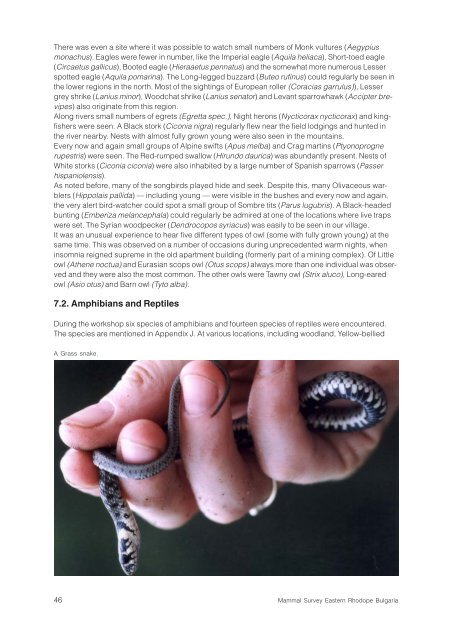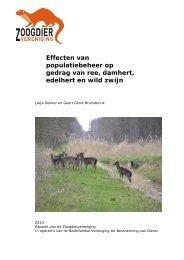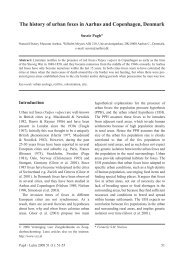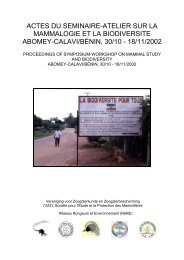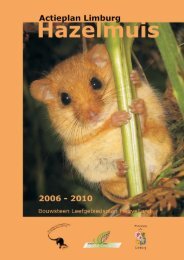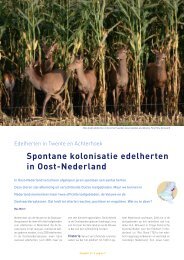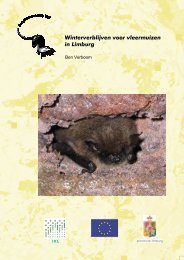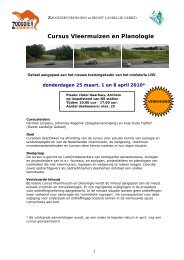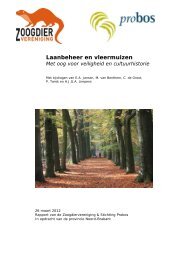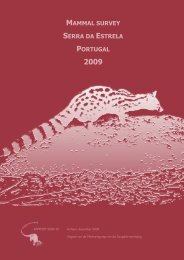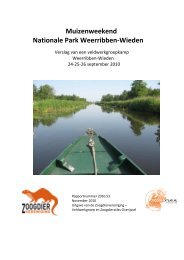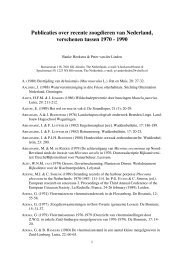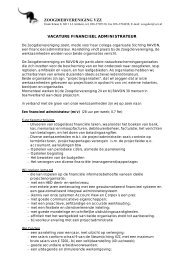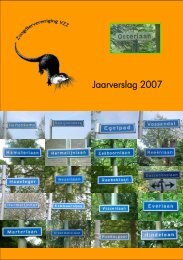Mammal Survey Eastern Rhodopes Bulgaria - De Zoogdiervereniging
Mammal Survey Eastern Rhodopes Bulgaria - De Zoogdiervereniging
Mammal Survey Eastern Rhodopes Bulgaria - De Zoogdiervereniging
- No tags were found...
Create successful ePaper yourself
Turn your PDF publications into a flip-book with our unique Google optimized e-Paper software.
There was even a site where it was possible to watch small numbers of Monk vultures (Aegypiusmonachus). Eagles were fewer in number, like the Imperial eagle (Aquila heliaca), Short-toed eagle(Circaetus gallicus), Booted eagle (Hieraaetus pennatus) and the somewhat more numerous Lesserspotted eagle (Aquila pomarina). The Long-legged buzzard (Buteo rufinus) could regularly be seen inthe lower regions in the north. Most of the sightings of European roller (Coracias garrulus)), Lessergrey shrike (Lanius minor), Woodchat shrike (Lanius senator) and Levant sparrowhawk (Accipter brevipes)also originate from this region.Along rivers small numbers of egrets (Egretta spec.), Night herons (Nycticorax nycticorax) and kingfisherswere seen. A Black stork (Ciconia nigra) regularly flew near the field lodgings and hunted inthe river nearby. Nests with almost fully grown young were also seen in the mountains.Every now and again small groups of Alpine swifts (Apus melba) and Crag martins (Ptyonoprognerupestris) were seen. The Red-rumped swallow (Hirundo daurica) was abundantly present. Nests ofWhite storks (Ciconia ciconia) were also inhabited by a large number of Spanish sparrows (Passerhispaniolensis).As noted before, many of the songbirds played hide and seek. <strong>De</strong>spite this, many Olivaceous warblers(Hippolais pallida) — including young — were visible in the bushes and every now and again,the very alert bird-watcher could spot a small group of Sombre tits (Parus lugubris). A Black-headedbunting (Emberiza melancephala) could regularly be admired at one of the locations where live trapswere set. The Syrian woodpecker (<strong>De</strong>ndrocopos syriacus) was easily to be seen in our village.It was an unusual experience to hear five different types of owl (some with fully grown young) at thesame time. This was observed on a number of occasions during unprecedented warm nights, wheninsomnia reigned supreme in the old apartment building (formerly part of a mining complex). Of Littleowl (Athene noctua) and Eurasian scops owl (Otus scops) always more than one individual was observedand they were also the most common. The other owls were Tawny owl (Strix aluco), Long-earedowl (Asio otus) and Barn owl (Tyto alba).7.2. Amphibians and ReptilesDuring the workshop six species of amphibians and fourteen species of reptiles were encountered.The species are mentioned in Appendix J. At various locations, including woodland, Yellow-belliedA Grass snake.46 <strong>Mammal</strong> <strong>Survey</strong> <strong>Eastern</strong> Rhodope <strong>Bulgaria</strong>


